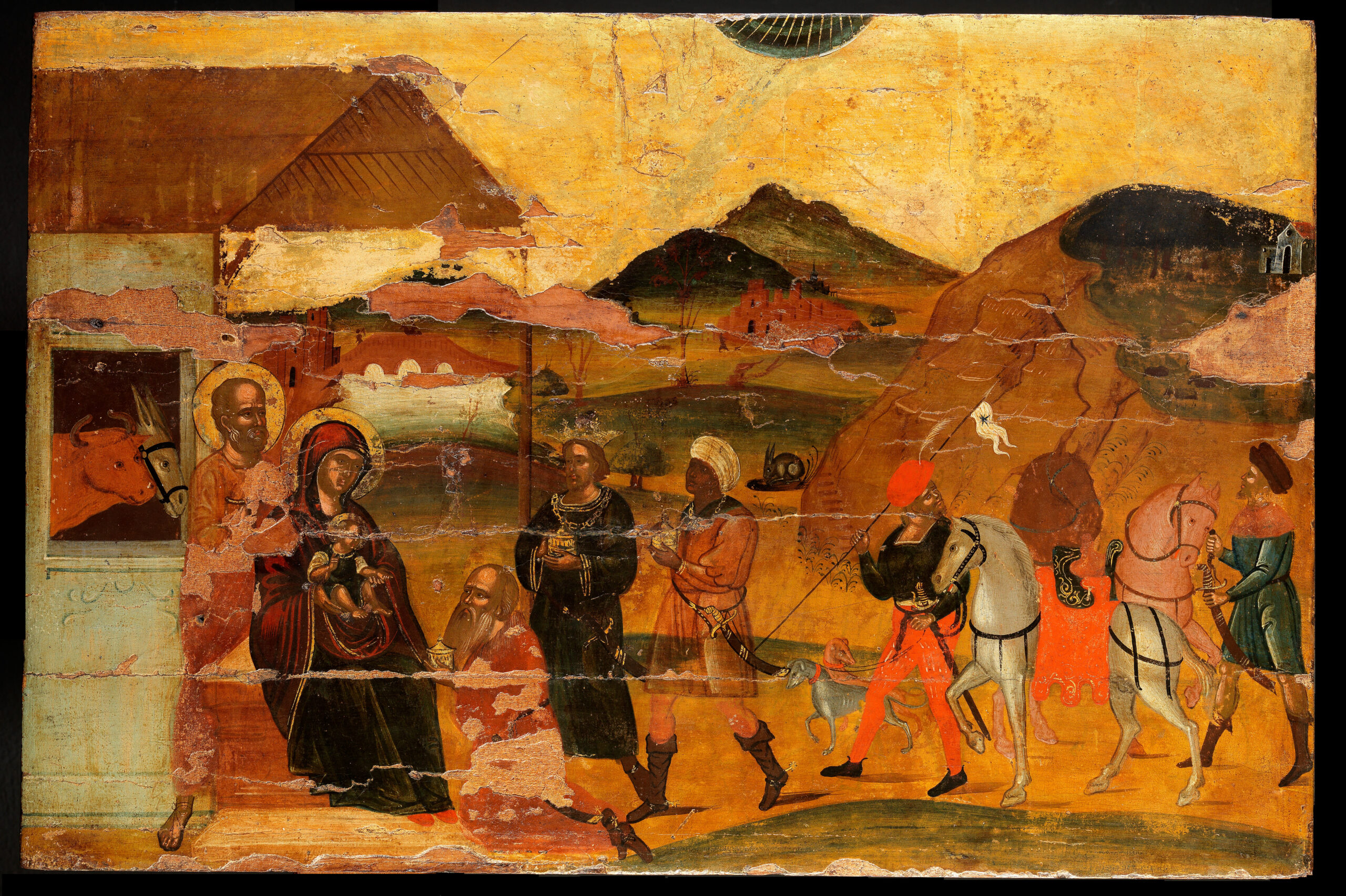This website uses cookies so that we can provide you with the best user experience possible. Cookie information is stored in your browser and performs functions such as recognising you when you return to our website and helping our team to understand which sections of the website you find most interesting and useful.

Icon with Christ, Man of Sorrows
In this icon, whose frame is made of the same piece of wood, Dead Christ is represented with his hands crossed on the chest upon the right part of a sarcophagus. He is flanked by Virgin Mary who embraces his body, covering it with her dress (maphorion).
The subject of the Ultimate Humiliation (Man of Sorrows) was shaped in late 11th century in Byzantium. The shaping of this new iconographic type was aided by the influence of hymns related to the mourning of Virgin Mary, which were established in the typika of the private monasteries of Constantinople. The earliest known example of the type is found in Kastoria and it is dated from the 12th century.
Code
ΒΕΙ 971
Type
Icon
Chronology
ca. 1400
Dimensions
Height 50.5 cm; width 37.5 cm; thickness 2 cm.
Material of Construction
Wood, egg tempera
Origin
Rena Andreadi donation













